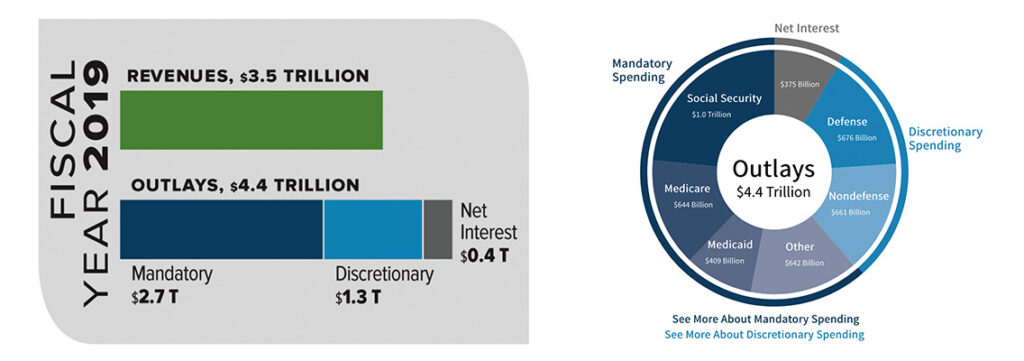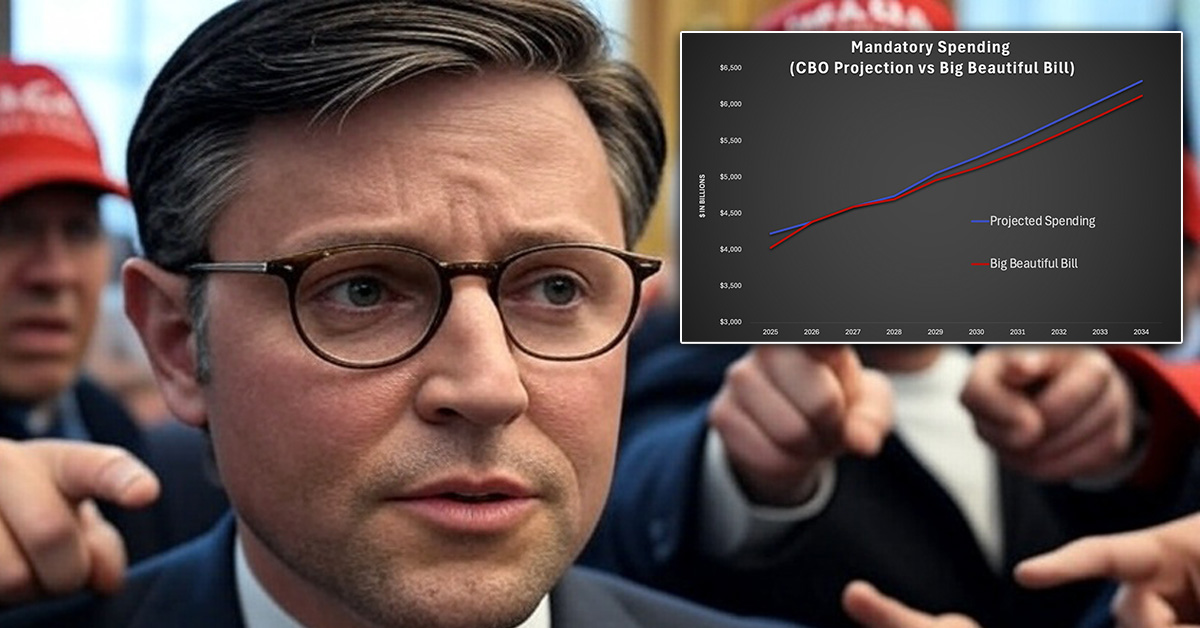We have a problem in this country, and Democrats aren’t the only ones to blame. The Republican Establishment has no willingness to shrink the size and scope of government and try to solve our enormous, impending national debt catostrophe.
Luckily, a substantial portion of the MAGA world is rising up and fighting back against the so-called “Big Beautiful Bill;” especially since the popular conservative program, D.O.G.E., is being undermined by the Republican Establishment’s appetite to continue growing spending.
So what’s in the Big Beautiful Bill?
Using a process known as “reconciliation,” the Republican House and Senate are tweaking mandatory spending items, revenue and the debt limit without the requirement of passing a bill that could be filibustered by Democrats in the Senate. If voted on by September 25th, the reconciliation bill, called the “Big Beautiful Bill,” would need a simple majority for passage.
At 1,116 page, the Bill does a lot of things…and not all of them are bad. For instance, it extends the Trump 2017 tax cuts and adds new savings for American households. It also funds the border, which was a key Trump campaign promise.
Here’s what the bill does NOT do. It does NOT cut spending. It only makes cuts to the projected growth of mandatory spending, which is the largest cost driver of our deficits. We await the appropriation bills from Congress to see how they tackle discretionary spending for the upcoming fiscal year (which starts on Oct 1).
Here’s a table of the impact of the bill using publicly available data by the Congressional Budget Office. In blue, is the CBO projected revenues and expenditures for the next decade. In red, is the impact on revenues and mandatory spending that the CBO projects the Big Beautiful Bill will have:

The Trump White House put out a statement yesterday claiming, “President Donald J. Trump’s One, Big, Beautiful Bill is a once-in-a-generation opportunity to cut spending, fuel growth, and level the fiscal footing of the American economy.”
Once again, this bill does NOT reduce spending. Take a look at the growth of spending over the next 10 years:

This bill also grows the deficit and would likely continue to add the projected $20 Trillion + to our enormous $37 Trillion National Debt.

Sen Johnson Calls for Pre-Pandemic Levels
Senator Ron Johnson (R-WI) is calling for federal spending to return to pre-pandemic levels, which would be the Fiscal Year 2019 budget. That year, total federal spending was $4.4 Trillion (nearly $3 Trillion less than what is projected for FY2026). If revenues remained the same, the federal government would be running a $709 Billion surplus!





